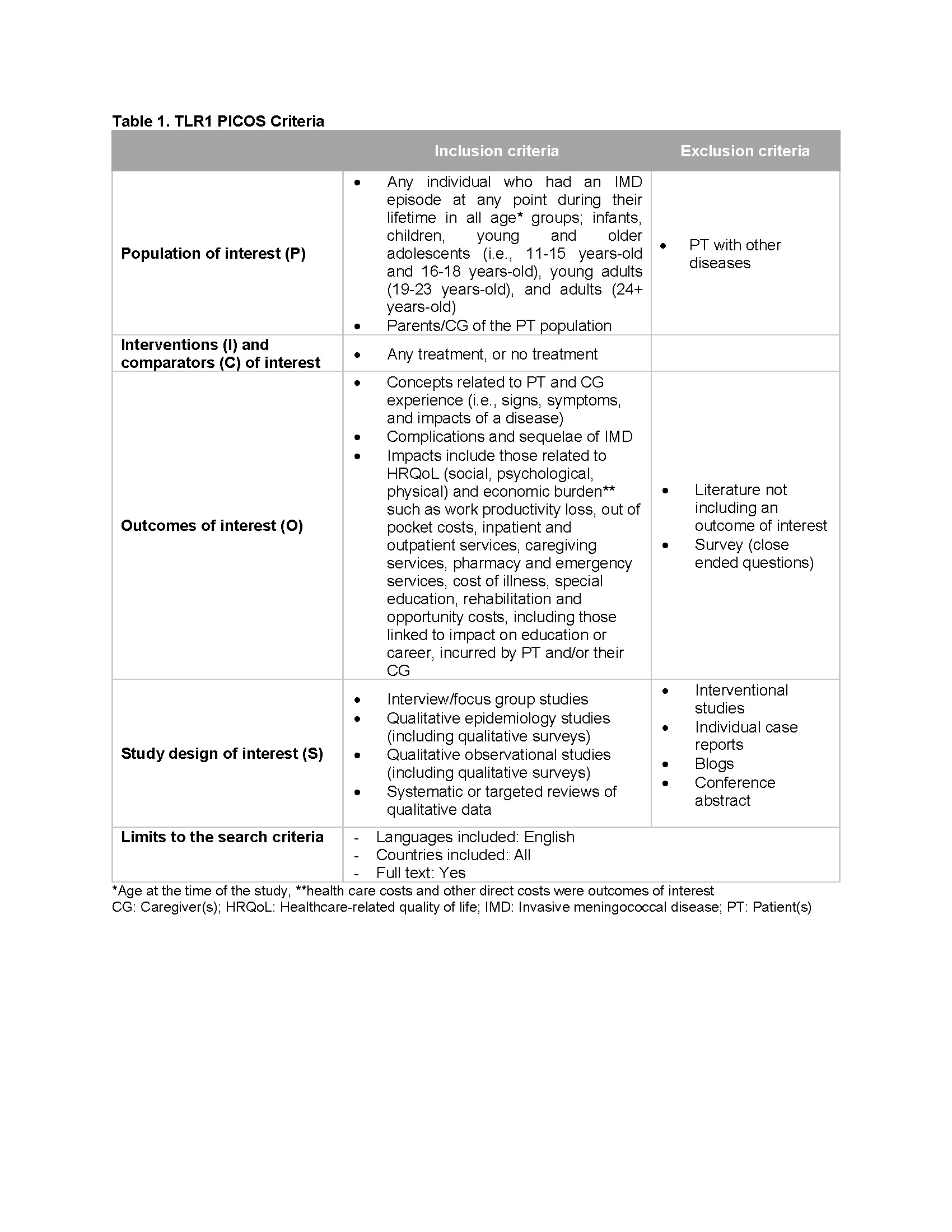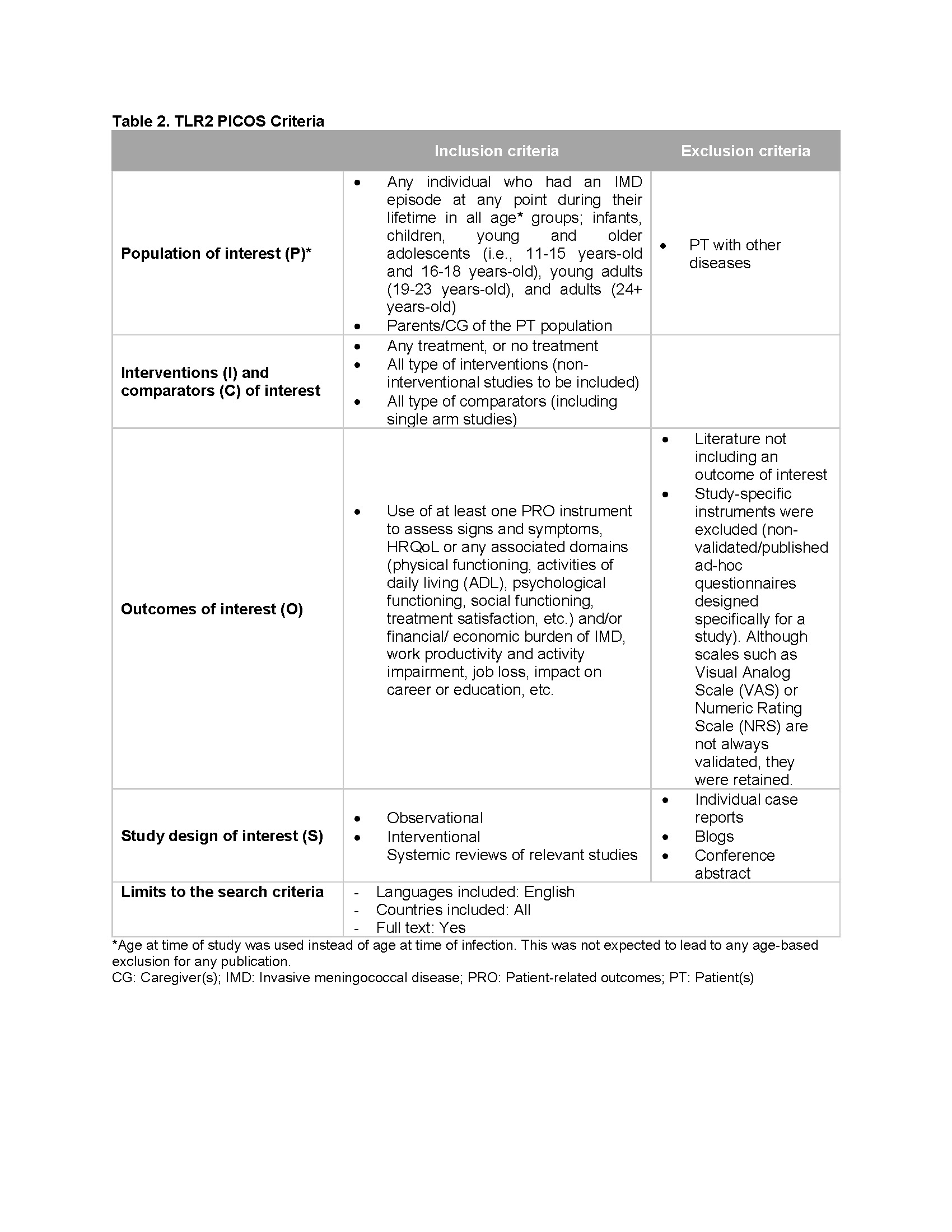Infectious Diseases
Infectious Diseases 3
407 - Concept elicitation to understand invasive meningococcal disease burden of illness from a patient and caregiver perspective
Publication Number: 407.417

Oscar Herrera-Restrepo, PhD (he/him/his)
US Health Outcomes Director
GSK
Philadelphia, Pennsylvania, United States
Presenting Author(s)
Background:
Invasive meningococcal disease (IMD), caused by Neisseria Meningitidis is an uncommon but unpredictable disease, often associated with short/long-term sequalae after the acute phase. Current evidence of IMD sequelae in the US is limited.
Objective:
This study identified IMD burden of disease (BoD) concepts and patient-related outcomes (PROs) instruments relevant to patients (PT) and caregivers (CG).
Design/Methods:
Two targeted literature reviews (TLR) were conducted. TLR1 (Table 1) focused on eliciting a conceptual model on IMD BoD concepts for PT/CG during and beyond the acute phase. PT who had an IMD episode at any point during their lifetime were considered. TLR2 (Table 2) explored if elicited concepts were covered with available PRO instruments.
Results:
TLR1 included 12 publications. Main elicited concepts for PT were disease signs/symptoms in the acute phase, and beyond it, sequalae (neurological as hearing impairment, physical as amputations, systemic) and impacts. Reported impacts included cognitive, behavioral, emotional, social, daily living activities, and economic impacts. In the acute phase, headache was the most reported symptom; 90%. Beyond the acute phase, most reported sequalae included hearing impairment (9/12) and amputation (9/12), while learning difficulty was the most prevalent impact; 22.6%. Other impacts were headache/migraine (6/12), cognitive deficits (5/12), behavioral conduct (5/12), and anxiety (4/12). Elicited concepts for CG were impacts as worry/fright about PT, helplessness, lack of knowledge about the disease outcomes, etc. TLR2 identified 26 generic and 1 disease-specific instrument: The Satisfaction with Life After Meningitis (SLAM). No instruments included informal CG impact/productivity loss, although generic instruments included CG burden domains. Based on content mapping using TLR1 elicited concepts, seven instruments were shortlisted: Pediatric Quality of Life Inventory, PedsQL; PedsQL Family Impact module, FIM; Euro QoL-5D, EQ-5D/EQ-5D-Y; Health Utility Index, HUI-3; Work Productivity and Activity Impairment Questionnaire-General Health, WPAI:GH; iMTA Productivity Cost Questionnaire, iPCQ; and CarerQoL. No instrument mapped all elicited concepts.
Conclusion(s):
The conceptual model shows the extension of IMD impact in PT/CG. No IMD-specific PRO instruments and alternatives cover all burden concepts. However, the available mapping could inform the design of future US qualitative/quantitative research (interviews/surveys) with direct insight from those who experienced IMD. Findings could inform public health decision-making on disease prevention and its benefits.

